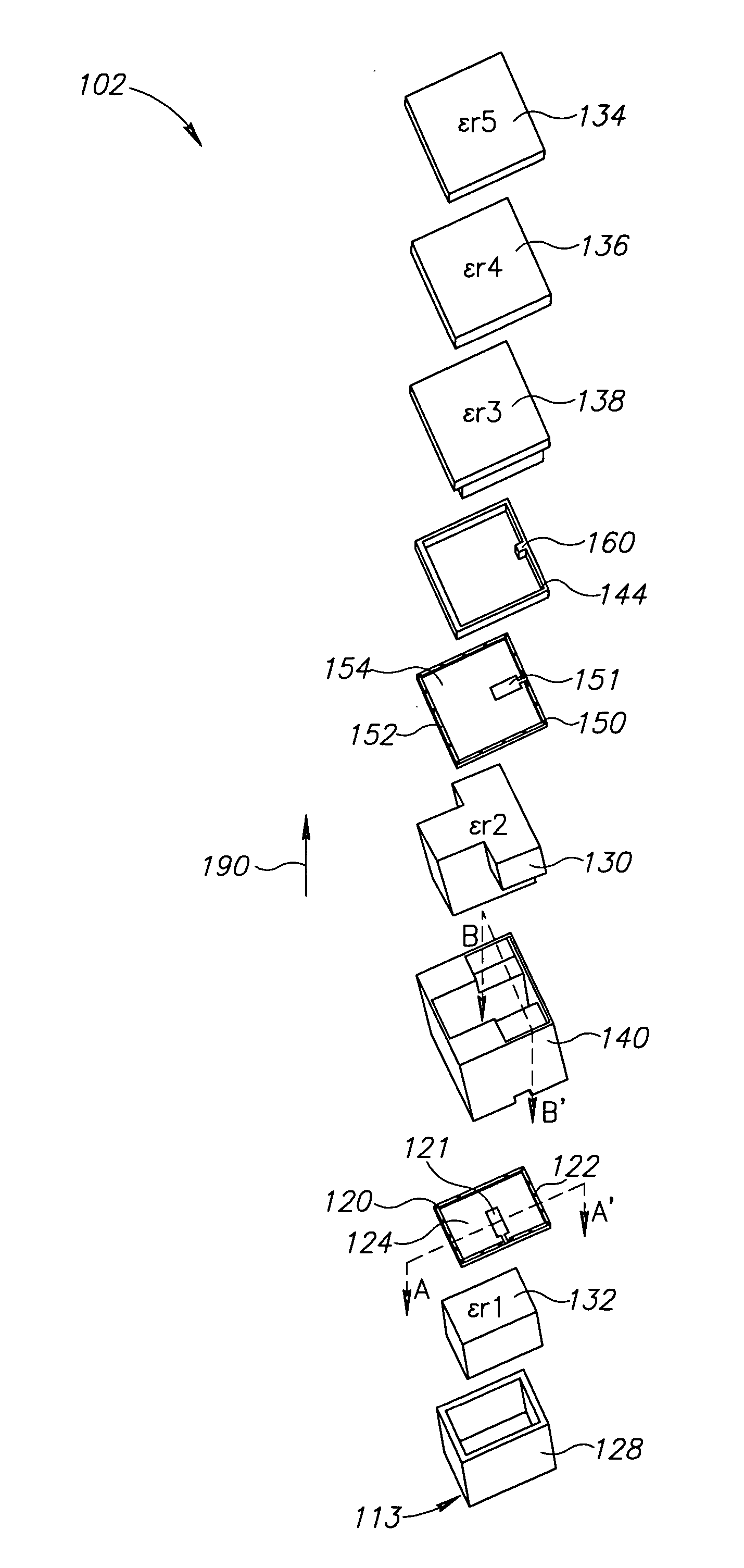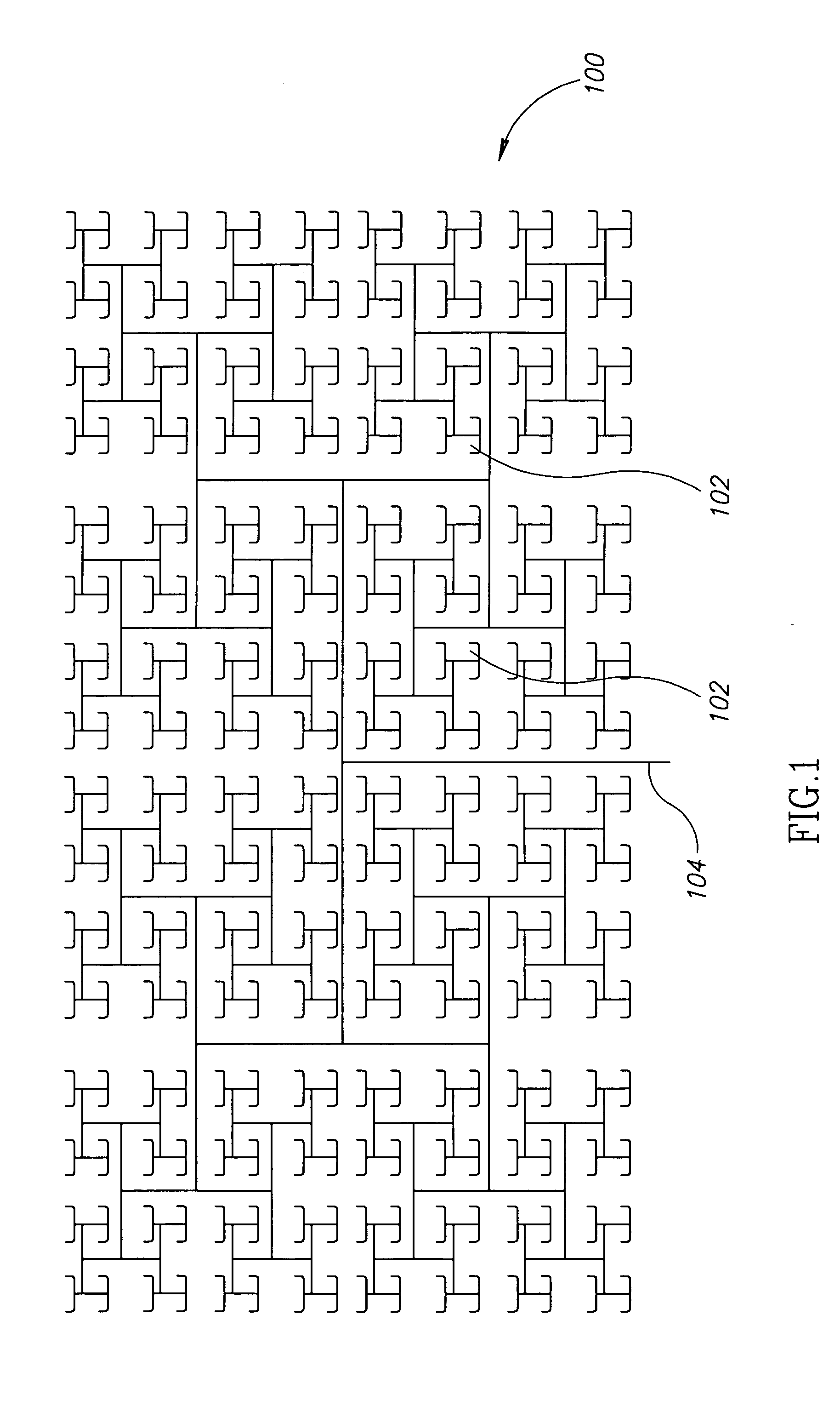Dual polarization planar array antenna and cell elements therefor
a planar array and antenna technology, applied in the direction of polarised antenna unit combinations, resonant antennas, radiating element structural forms, etc., can solve the problems of interference with intra-cell isolation, inability to use antennas in applications, and inability to achieve application, so as to reduce cross coupling and increase the transmission and/or reception efficiency of antennas
- Summary
- Abstract
- Description
- Claims
- Application Information
AI Technical Summary
Benefits of technology
Problems solved by technology
Method used
Image
Examples
Embodiment Construction
General Structure
[0030]FIG. 1 is a schematic top view layout of a corporate conductive feed array for an exemplary antenna panel 100, in accordance with an exemplary embodiment. Antenna panel 100 includes a plurality of cells 102 at the distal end of each feed point which are connected in a corporate array of feed lines to a central single main feed line 104, in what is commonly referred to as a corporate feed network (CFN). Although only one CFN is shown in FIG. 1, antenna panel 100 typically includes two CFNs in two parallel layers. The CFNs are optionally separated by an isolating layer and are optionally sandwiched between isolating layers. Optionally, the CFN may be realized with micro-strip lines, suspended strip lines and / or waveguides, although other physical structures for RF transmission lines may be used.
[0031] In some embodiments, antenna panel 100 includes at least 16, 20 or even at least 50 (e.g., 64) cells. Optionally, antenna panel 100 includes at least 100, 250 o...
PUM
 Login to View More
Login to View More Abstract
Description
Claims
Application Information
 Login to View More
Login to View More - R&D
- Intellectual Property
- Life Sciences
- Materials
- Tech Scout
- Unparalleled Data Quality
- Higher Quality Content
- 60% Fewer Hallucinations
Browse by: Latest US Patents, China's latest patents, Technical Efficacy Thesaurus, Application Domain, Technology Topic, Popular Technical Reports.
© 2025 PatSnap. All rights reserved.Legal|Privacy policy|Modern Slavery Act Transparency Statement|Sitemap|About US| Contact US: help@patsnap.com



